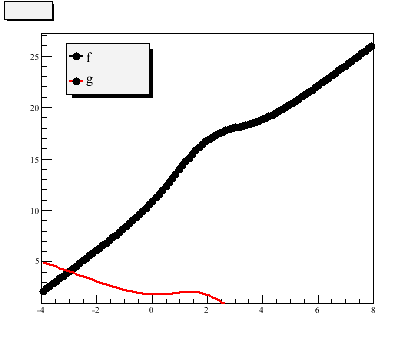Dear Rooters,
I did not solve directly my problem but I find a workaround using polynomial fits.
But somehow I bumped again in the same question of my first post: how to tell ROOT to “shift” the parameter number while adding previously defined user functions?
I first found that it works “by itself” while adding functions, although I do know that you are supposed to tell in your formula explicitly while using predefined formulas the parameter shift (ex: “gaus(0)+gaus(3)” instead of “gaus+gaus”). It does not seems to work with general functions (ex: “f1+f2” and not “f1(0)+f1(3)” see below)
Now I run the small test below, after I realized some of my fit results looked strange:
gROOT->Reset();
TF1 *f1 = new TF1("f1","[0]*TMath::Voigt(x-[1],[2],[3],4)",-4,8);
TF1 *f2 = new TF1("f2","pol1",-4,8);
TF1 *f = new TF1("f","f1+f2",-4,8);
TF1 *g = new TF1("g","f2+f1",-4,8);
f->SetParameters(10,2,1,1,1,-1);
g->SetParameters(1,-1,10,2,1,1);
cout << f->GetExpFormula("p") << endl;
cout << g->GetExpFormula("p") << endl;
f->Draw("p");
g->SetLineColor(2);
g->Draw("same");
The formula obtained with GetExpFormula(“p”) is:
([0]*TMath::Voigt(x-[1],[2],[3],4))+pol1
pol1+([2]*TMath::Voigt(x-[3],[4],[5],4))
which is what one would expect. Although the graphical results are different:

and the strangest thing for me is that is “f” which is wrong.
Finally adding explicitly pol1(4) or pol1(0) instead of f2 in respectively f et g solved the issue… as expected of course.
I guess this is somehow a normal behavior but then I came to the conclusion that is it possible to automatically add user defined functions generated from formulas but not predefined functions. I am right?
For now on I will then explicitly defined my polynomial with “[0]+[1]*x+…”. But maybe it is possible to have ROOT directly doing this ?
Best regards
Julien
PS: forgot to say: I am using ROOT 5.28 on a linux box (ubuntu 10.04)
